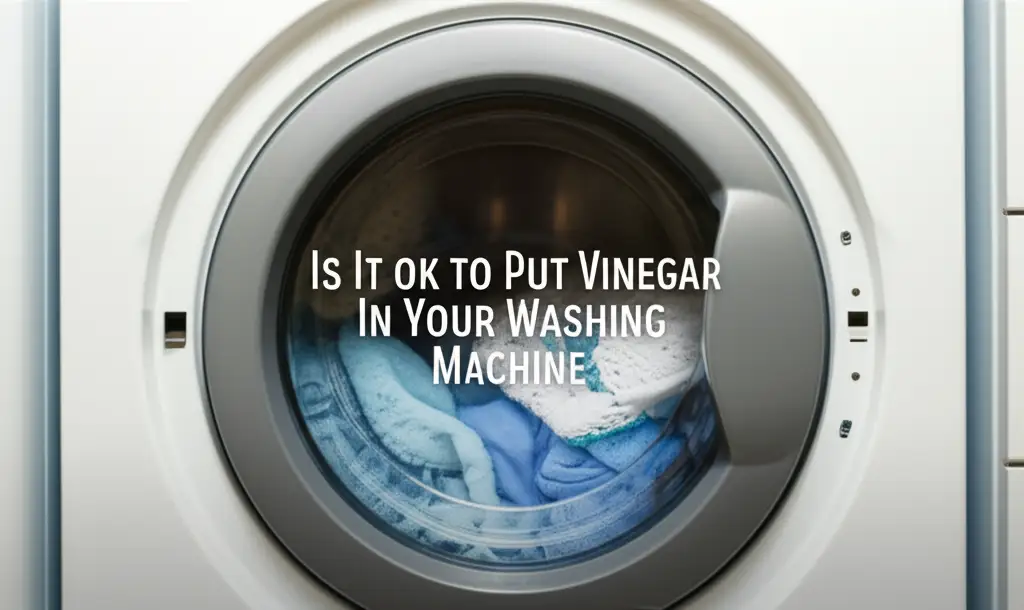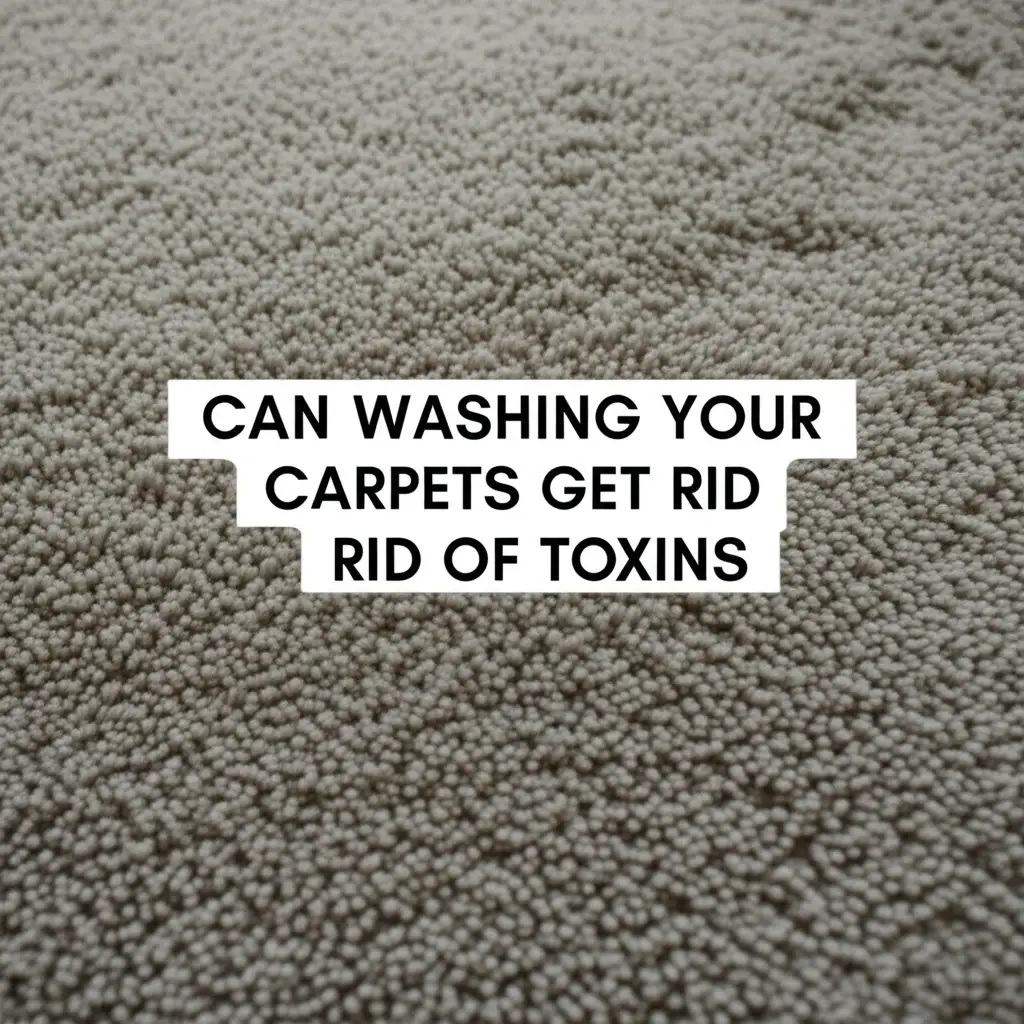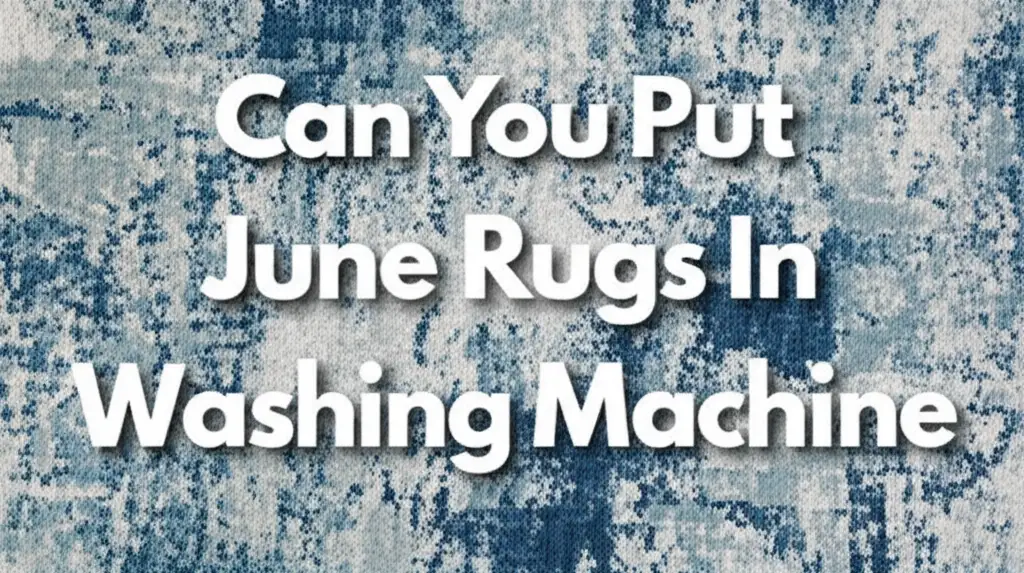· Elira Thomsen · Home Care · 14 min read
Do Mites Die In The Washing Machine? Get Answers!

Do Mites Die In The Washing Machine? Get Answers!
Dealing with dust mites can feel like an invisible battle in our homes. These tiny creatures, often unseen, are a common trigger for allergies and asthma. Many people ask, “Do mites die in the washing machine?” This is a crucial question for anyone looking to maintain a clean and allergen-free living space. We frequently wash our bedding and clothes, hoping these actions eliminate unwanted guests.
In this comprehensive guide, we explore the effectiveness of using your washing machine to kill dust mites. We will discuss ideal water temperatures, the role of detergents, and the importance of the drying process. You will learn practical steps to reduce mite populations in your home. Let us discover how to best tackle these microscopic invaders.
Takeaway
- Hot water cycles (130°F / 54.4°C or higher) effectively kill dust mites.
- Cold water washing removes allergens but does not kill mites.
- High-heat drying is crucial for mite eradication after washing.
- Regular washing of bedding, especially at high temperatures, significantly reduces mite populations.
- Consider specific detergents or additives for enhanced mite control.
Yes, mites can die in the washing machine, but effectiveness depends greatly on the water temperature. Hot water, specifically 130°F (54.4°C) or higher, is highly effective at killing dust mites and washing away their allergens. Cold water washes can remove allergens but may not kill the mites themselves.
Understanding Dust Mites: Tiny Invaders
Dust mites are microscopic creatures that belong to the spider family. They are invisible to the naked eye. These tiny organisms thrive in warm, humid environments. They feed on dead skin cells from humans and pets. Our homes, especially our beds, carpets, and upholstered furniture, provide ideal habitats for them.
Mites do not bite, but their droppings and decaying body parts are potent allergens. When we inhale these particles, they can trigger allergic reactions. Symptoms include sneezing, runny nose, itchy eyes, and skin rashes. For people with asthma, dust mites can make breathing difficult. Controlling mite populations is key to managing these health issues.
We share our living spaces with billions of these creatures. Understanding their lifecycle and preferred conditions helps us combat them effectively. Our focus here is on how laundry practices can reduce their numbers. A proactive approach to cleanliness helps maintain a healthier home environment.
The Washing Machine’s Role in Mite Control
Your washing machine is a primary tool in the fight against dust mites. Regular laundry helps remove mites and their allergens from fabrics. Simply putting items into the wash can make a difference. The agitation and water help dislodge these particles.
However, the effectiveness varies greatly depending on your chosen wash cycle. Not all washing methods kill mites equally. Some methods only remove allergens. Others can actively kill the mites. We must use the right settings for the best results.
Think of your washing machine as a powerful cleaning agent. It can physically remove the problem from your fabrics. But to truly eliminate the mites, we need to add other elements. Temperature is perhaps the most important factor in this process. You want to make sure your machine is ready for the task. Learning what goes where in a washing machine ensures you load it correctly for optimal cleaning.
Temperature Matters: Hot vs. Cold Water for Mites
The temperature of the water is the single most critical factor for killing mites. Different temperatures have different impacts. Understanding these effects helps you choose the best wash cycle.
Hot Water: The Mite Killer
Hot water is your best friend when it comes to mite eradication. Water temperatures of 130°F (54.4°C) or higher kill dust mites effectively. Most modern washing machines have a “hot” setting that reaches these temperatures. For severe allergies, some experts recommend temperatures of 140°F (60°C) or higher. This ensures maximum mite kill.
Using hot water denatures the proteins in mite allergens. It also breaks down the mites’ bodies. This makes them easier to wash away. Always check your fabric care labels. Not all items can withstand very hot water. For items like bedding, towels, and certain clothing, hot water is usually safe.
Cold Water: Allergen Removal Only
Washing with cold water does not kill dust mites. It can, however, remove a significant amount of mite allergens from fabrics. Cold water is suitable for delicate items or dark colors that might fade in hot water. If you use cold water, you still get some benefit.
The physical action of washing helps rinse away mite particles. Think of it as a flush. While the mites may survive, their irritating droppings are greatly reduced. For items that cannot tolerate hot water, cold washing is a good compromise. But remember, it is not a complete solution for mite extermination.
The Power of Drying: Crucial for Mite Eradication
Washing alone is often not enough to fully eliminate dust mites. The drying cycle plays an equally vital role. High heat in the dryer is very effective at killing any mites that survived the wash. It also helps to fully dry out items, reducing humidity that mites love.
High Heat Drying: The Final Blow
Using a high heat setting in your dryer for at least 15-20 minutes is highly recommended. This extreme temperature will kill any remaining mites. It also helps to thoroughly dry the fabric. Mites cannot survive in very dry conditions. They need humidity to thrive.
Make sure your items are completely dry before putting them away. Damp fabrics can create a perfect breeding ground for new mites. If you line dry clothes, the sun’s UV rays can help. However, a dryer’s sustained high heat is more reliable for mite killing.
Air Drying Considerations
Air drying, especially indoors, may not be sufficient for mite control. It does not provide the high heat needed to kill mites. It also might leave fabrics slightly damp, which could promote mite growth. If you must air dry, choose a sunny, dry day outdoors. The sun’s UV light can have some effect.
For optimal mite eradication, always prioritize machine drying on a hot setting. This two-step process—hot wash followed by hot dry—gives you the best chance of a mite-free outcome.
Detergents and Additives: Boosting Your Mite Fight
While temperature is key, certain detergents and additives can enhance your mite control efforts. They assist in breaking down allergens and removing stubborn particles. Understanding their role helps you choose the right laundry products.
Standard Detergents
Regular laundry detergents are effective at cleaning fabrics and rinsing away allergens. They contain surfactants that lift dirt and particles from fibers. For a typical hot wash, a good quality detergent is often sufficient. It helps in the physical removal process.
However, standard detergents do not contain specific ingredients that kill mites. Their primary role is to clean. The hot water does the killing. The detergent helps to carry away the dead mites and their waste.
Mite-Specific Additives
Some specialized laundry additives are designed to neutralize dust mite allergens. These products often contain active ingredients that denature mite proteins. You add them to your regular wash cycle. They are especially useful for items that cannot be washed in very hot water.
Look for products labeled as “allergen control” or “dust mite treatment” for laundry. They can provide an extra layer of protection. These additives ensure that even if some mites survive, their allergenic potential is greatly reduced. For instance, if you are tackling tough stains like oil, using the right detergent is key. This is similar to how you learn how to get oil out of washing machine with specific products.
Washing Specific Items: Tailoring Your Approach
Different household items require different washing approaches for mite control. Understanding these nuances helps you protect various fabrics and belongings. From your bedding to pet beds, each item has specific care needs.
Bedding: Your Primary Battleground
Bedding is the most common habitat for dust mites. This includes sheets, pillowcases, duvet covers, and blankets. You should wash these items weekly. Use hot water (130°F/54.4°C or higher) and follow with a hot dryer cycle. This regular, high-temperature wash is crucial.
For items like pillows and duvets, check their care labels. Many can also be machine washed and dried. Aim to wash them every 1-3 months. Encase mattresses and pillows in allergen-proof covers for added protection.
Clothing and Stuffed Animals
Most everyday clothing does not harbor as many mites as bedding. Regular washing is usually sufficient. For clothes worn close to the skin or items belonging to allergy sufferers, consider hot water washes when possible.
Stuffed animals are dust mite magnets, especially if children frequently play with them. Wash them regularly, at least monthly. Use hot water if the fabric allows. If not, placing them in a sealed plastic bag in the freezer for 24 hours can kill mites. Then, wash them in cold water to remove allergens.
Pet Beds and Rugs
Pet beds can also be significant sources of dust mites. Wash pet beds frequently, ideally weekly, using hot water. Similar to bedding, they benefit from high-heat drying. For larger items like rugs, check if they are machine washable. If your rug is washable, like a June rug, you can definitely consider putting can you put June rugs in washing machine.
For items that cannot be washed, such as some belts or suits, consider professional cleaning. For example, can you wash a belt in the washing machine and can suits be washed in washing machine often have specific instructions.
Beyond the Wash: Comprehensive Mite Management
While the washing machine is a powerful tool, it is part of a larger strategy. A comprehensive approach tackles dust mites throughout your home. This multi-pronged attack ensures long-term relief from allergens.
Control Humidity
Dust mites thrive in high humidity. Aim to keep indoor humidity levels below 50%. Use a dehumidifier in damp areas like basements or bedrooms. Proper ventilation also helps reduce moisture. Open windows or use exhaust fans when showering or cooking.
Reduce Clutter and Carpeting
Mites love places to hide. Carpets, upholstered furniture, and excessive clutter provide ideal breeding grounds. Consider replacing carpets with hard flooring like wood, tile, or laminate. These surfaces are easier to clean and harbor fewer mites. Reduce decorative items that collect dust.
Regular Vacuuming and Dusting
Vacuum carpets and upholstery regularly, at least once a week. Use a vacuum cleaner with a HEPA filter. This traps tiny allergen particles. Dust surfaces with a damp cloth to capture dust rather than just spreading it around.
Air Purifiers
While not directly killing mites, air purifiers with HEPA filters can help. They remove airborne mite allergens. Place them in bedrooms where you spend significant time. This helps improve air quality.
Combining these strategies with effective laundry practices creates a formidable defense against dust mites. Think of it as creating a home environment hostile to mites. Maintaining a clean and dry home supports your efforts. Just like knowing how to clean your washing machine agitator for a clean machine, consistent home cleaning helps control mites.
Maintaining Your Washing Machine for Mite Control
A clean washing machine works better at killing mites and removing allergens. Over time, detergents, fabric softeners, and hard water minerals can build up inside your machine. This residue can reduce its efficiency. It can also create an environment for mold or mildew.
Regular Cleaning Cycles
Most modern washing machines have a self-clean cycle. Run this cycle monthly or as recommended by the manufacturer. Use a washing machine cleaner or a mixture of white vinegar and baking soda. This process removes residue and keeps your machine fresh. Learning how to clean a top loader washing machine or how to clean an LG HE washing machine are good starts.
Wiping Down Seals and Dispensers
After each wash, wipe down the rubber seal around the door of front-loader machines. Moisture trapped here can lead to mold growth. Clean detergent and fabric softener dispensers regularly. Residue can clog these compartments and affect how products are dispensed.
A well-maintained washing machine ensures that your hot water washes are truly effective. It also prevents the transfer of unwanted odors or residues to your “clean” laundry. A clean machine means truly clean and mite-free laundry.
Practical Steps for Effective Mite Removal
Let’s put all this knowledge into action with some clear, practical steps. Following these guidelines helps you maximize your washing machine’s mite-killing power. These steps are simple to integrate into your regular laundry routine.
- Wash Bedding Weekly: Make this a non-negotiable part of your routine. Sheets, pillowcases, and duvet covers collect the most mites. Regular washing keeps their numbers down.
- Use Hot Water: Always select the hottest water setting suitable for your fabrics. Aim for 130°F (54.4°C) or higher. Check fabric care labels to prevent damage. This high temperature kills mites.
- High Heat Dry: After washing, transfer items immediately to the dryer. Use a high heat setting for at least 15-20 minutes. This ensures complete mite destruction and dryness.
- Clean Delicate Items Separately: For items that cannot withstand hot water, wash them in cold water. Then, tumble dry on high for 15-20 minutes if possible. Alternatively, use a mite-specific laundry additive.
- Encase Mattresses and Pillows: Use allergen-proof, zippered covers for mattresses, box springs, and pillows. These create a barrier that mites cannot penetrate. Wash these covers monthly.
- Vacuum Regularly with HEPA Filter: Vacuum carpets, rugs, and upholstery at least once a week. A HEPA filter traps mite allergens effectively.
- Control Humidity: Use dehumidifiers to keep indoor humidity below 50%. This makes your home less hospitable to mites.
- Minimize Clutter: Reduce soft furnishings, decorative pillows, and stuffed animals where mites can hide. Wash or freeze items that cannot be easily cleaned.
- Clean Your Washing Machine: Run a cleaning cycle monthly. Wipe down seals and dispensers. This ensures your machine operates at its best.
By consistently applying these steps, you create a powerful defense against dust mites. You will notice a significant improvement in your home’s air quality. This also reduces allergy symptoms.
FAQ Section
How hot does water need to be to kill dust mites?
Water needs to be at least 130°F (54.4°C) to effectively kill dust mites. Some sources recommend 140°F (60°C) for maximum effectiveness. Always check your fabric care labels before using very hot water. Higher temperatures ensure complete mite eradication.
Can cold water washing get rid of dust mites?
Cold water washing does not kill dust mites. However, it can significantly reduce the number of dust mite allergens on fabrics. The physical action of washing helps rinse away their droppings and body parts. For delicate items, cold water with a hot dryer cycle or a mite-specific additive is an option.
Does drying clothes on high heat kill dust mites?
Yes, drying clothes on high heat is very effective at killing dust mites. A dryer’s sustained high temperature, especially for at least 15-20 minutes, will kill any mites that survived the wash cycle. It also removes moisture, which mites need to live.
How often should I wash bedding to control dust mites?
You should wash bedding (sheets, pillowcases, duvet covers) weekly to control dust mites. This regular schedule helps to keep mite populations low. Use hot water and follow with a high-heat dry for best results.
Are there special detergents that kill dust mites?
Standard detergents clean and remove allergens, but they do not typically kill mites. Some specialized laundry additives are designed to neutralize dust mite allergens. You can add these to your wash cycle, especially for items that cannot withstand hot water.
What other steps can I take to reduce dust mites in my home?
Beyond washing, control humidity below 50%, vacuum regularly with a HEPA filter, and dust with a damp cloth. Encase mattresses and pillows in allergen-proof covers. Reduce carpets and clutter. These combined efforts create a less hospitable environment for mites.
Conclusion
Tackling dust mites in your home is a key part of maintaining a healthy living environment. We have explored the power of your washing machine in this battle. You now know that hot water, at temperatures of 130°F (54.4°C) or higher, is the hero for killing dust mites. The high-heat drying cycle is an equally critical step, ensuring any survivors are eliminated.
While cold water washes can remove allergens, they do not kill the mites themselves. Combining hot washing with hot drying creates a powerful one-two punch against these microscopic invaders. Remember to tailor your approach to different items, such as bedding, clothing, and pet beds. We encourage you to implement these strategies regularly. By doing so, you will significantly reduce dust mite populations in your home. This leads to fewer allergy symptoms and a more comfortable living space for everyone.





